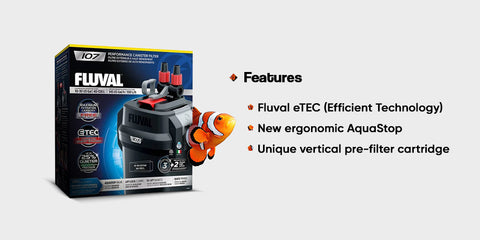How do you set up a canister filter for an aquarium
To attain a healthy aquarium ecosystem that is flourishing, there is a constant need for care and paying close attention to details, more so when it comes to filtration. Among the many different types of filtration systems, canister filters are one of the most effective and diverse solutions for keeping aquarium water clean and clear.
This ultimate guide will walk us through the nitty-gritty of installing a canister filter. We will also explore the reasons why you should use one, in addition to analyzing other filters such as the sump filter.
Canister Filters: An Overview

Canister filters (or external filtering systems) are designed to catch pieces of debris, waste, and other impurities from aquarium water. It involves closed reaction vessels with packed filters and hoses for inlet and outflow. These filters operate through mechanical, chemical, and biological filtering to keep the desired quality level of water within their aquariums.
Advantages of Canister Filters
- Effectiveness: For its superb filtration it can be rightfully called canister filters. Large filtering capabilities and high flow rates are the signs of their operating efficiency when they are applied for the removal of organic matter or particles from the aquarium water.
- Adaptability: Canister filters work with all kinds of aquarium systems such as freshwater, saltwater, and planted tanks. They can be fitted with multiple filter media selections hence, making them very customizable according to the specific filtering tasks.
- Compact Design: Unlike inner block filters or other in tank systems, canister filters can be conveniently and less noticeably housed outside of the tank or in the aquarium's stand. This type of design not only reduces clutter in the aquarium but also helps in maintenance by offering easy access.
How to Set Up a Canister Filter
- Select Filter: Select a canister filter that is suitable for your aquarium's size and its inhabitants.
- Assemble Components: Assemble the canister, hoses, media baskets, and any add-ons.
- Prepare Media: Rinse the baskets and the filter media and place them in their baskets.
- Install Filter: Set the filter either next to your aquarium or in the aquarium stand. Connect the hoses to the filter and insert the in tank section of the hoses over the back of into your aquarium.
- Prime Filter: Initial filling with water to begin the flow and air removal. Follow the instructions that came with your filter for this process.
- Monitor and Adjust: Monitor water parameters utilizing a test kit. Make adjustments if needed, and maintain / control equipment.
Truvu Aqauarium‘s Special Edition
Fluval 107 External Filter

Fluval's newly designed 107 Performance Canister Filter is well-suited for aquariums up to 30 US gallons, with a compact form factor of 7.5 l x 7 w x 13.7 h. As the latest generation of Fluval's renowned canister filter array, it comes with highly-enhanced performance.
It also includes a lot of energy-efficient technology, ear hinges that are redesigned to be more stable and provide vibration dampening, simplified water outlets (hydrophilic) that operate smoothly (AquaStop), and Lift-Lock clamps that can be easily used. Furthermore, the EZ-Lift media baskets and vertical pre-filter cartridges also provid a very convenient option for maintenance.
Conclusion
Establishing a canister filter for the aquarium is an easy process that can in turn remarkably improve the water quality and health of the aquatic organisms. When you make a careful choice of the right filter, go through the proper assembly of the components, and change filtration media from time to time, you will have created a good home for the inhabitants in your aquarium.
Whether you’re a new or experienced hobbyist, adding a canister filter to your aquarium is a good investment for your aquarium inhabitants' world.
Check out Truvu Aquariums today to check the plethora of canister filters and order the best one for your aquarium.




